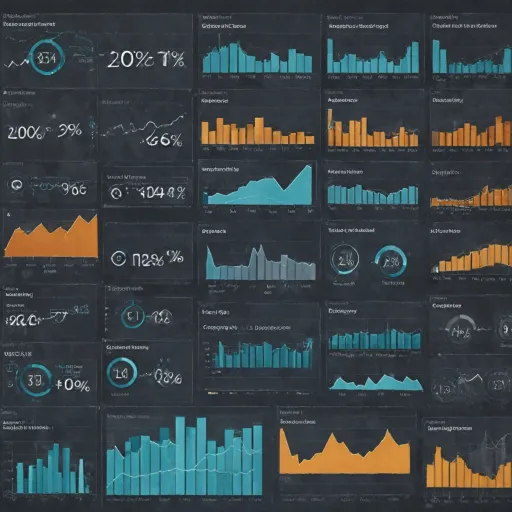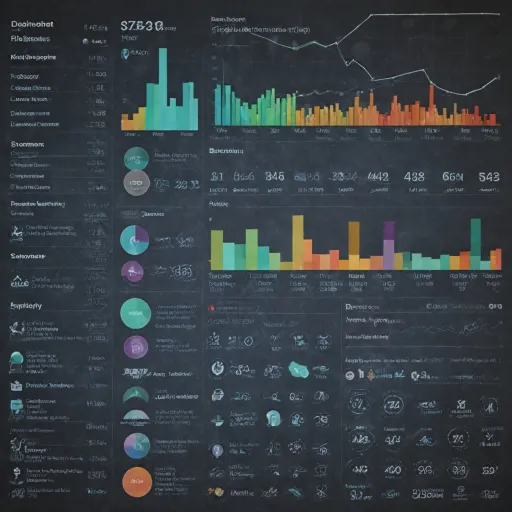
Understanding Employment Categories
Recognizing Diverse Forms of Employment
Understanding the various types of employment is crucial in today's dynamic work environment. Especially in regions like Silicon Valley, the diversity of employment forms is growing rapidly, shaping how individuals engage with their work. Employers can now choose from a range of employment statuses to better match their needs and the needs of employees. One primary classification is between full-time employees and part-time employees. Full-time employees typically work a standard number of hours, often 40 hours a week, and receive a comprehensive compensation package that may include health insurance. On the other hand, part-time employees work fewer hours and might not receive the same level of benefits, but they offer flexibility in managing workforce demands. Independent contractors and independent contractors have gained popularity as well, especially for short-term projects or services. They offer employers flexibility and cost efficiency, as they are usually paid for the work performed rather than receiving a fixed salary or benefits. However, defining the employment status of an individual as a contractor or full-time employee has significant implications for compensation, legal obligations, and employee rights. Contract and temporary employment types also present valuable options for businesses seeking to adapt quickly to changing market conditions. These employees work for a fixed period and might receive fewer benefits, ensuring the employer can scale their workforce up or down as needed without long-term commitments. By comprehending these types of employment, organizations can harness workforce analytics to make informed decisions. They can better manage resources, optimize compensation strategies, and ensure compliance with labor laws, thus maintaining an agile, effective workforce. The impact of human resources professionals in navigating these complexities cannot be understated, as they play a key role in aligning employment choices with organizational goals.Impact on Workforce Analytics
Influence of Employment Status on Workforce Data
The types of employment, whether full-time, part-time, or independent contractors, have a profound impact on workforce analytics. For employers, understanding the time employees dedicate to their work is crucial to effectively manage compensation and productivity. This incorporates tracking hours full commitment for full-time employees as well as fewer hours typically evident in short term contracts or part-time roles.
From the employee perspective, the choice between full-time employment and contracting independently can significantly affect health insurance and other benefits. Knowing the employment status helps determine whether an individual is insurance paid by the employer or opts for personal coverage, influencing both financial costs and obligations.
Analyzing employment types also assists in understanding workforce dynamics. For instance, Silicon Valley tech firms frequently hire independent contractors due to the specialized and temporary nature of projects. Such insights, when translated into data, can improve the management system in adapting strategies that accommodate different work forms, fostering a balanced and efficient time employment environment.
For more on how these dynamics impact broader human resources strategies, you can explore this guide celebrating the impact of HR professionals, which delves deeper into the nuances of employment strategies and analytics.
Challenges in Data Management
Data Management Complexities in Employment Analytics
The array of employment types—from full-time employees to independent contractors—brings a myriad of challenges to workforce data management. As employers strive to maintain efficient operations, the tracking of work hours, compensation, and employment status becomes increasingly critical. A time management system is often employed to monitor hours worked by both full-time and fewer-hours employees. However, integrating different employment data, such as from independent contractors, presents significant hurdles. Data systems must ensure that independent contractors’ services are contractually traced separately from those of regular employees. Indeed, understanding the distinctions between compensation forms and health benefits—such as insurance paid for full-time versus short-term contract workers—is imperative for accurate workforce analytics. Moreover, software solutions need the agility to handle the nuances of the employment status spectrum. Silicon Valley firms have often pioneered in this realm, using advanced platforms to facilitate seamless management of diverse employment forms. Finally, with the increasing move towards diverse work arrangements, it is vital for systems to remain compliant with legal definitions of employment types. This ensures the organization’s data accuracy while also adhering to necessary legal frameworks. More insights on this can be explored in our article about how favoritism shapes the workplace, which discusses the implications of data management on workplace dynamics.Legal and Compliance Considerations
Navigating the Legal Labyrinth: Compliance in Employment Types
Understanding the legal and compliance considerations surrounding various employment types is crucial for both employers and HR professionals. Each employment category—be it full-time, part-time, independent contractors, or short-term contracts—comes with its own set of legal obligations and challenges. Ignoring these can lead to significant legal risks including financial penalties and damage to the organization's reputation.
One of the primary legal considerations is ensuring proper classification of employees. Misclassifying an employee as an independent contractor can lead to disputes over compensation, unpaid overtime, or lack of benefits such as health insurance. In Silicon Valley and other competitive tech hubs, the line between independent contractors and employees can blur, often requiring meticulous attention to contract specifics and work performed.
Employment status also dictates what kinds of compensations, benefits, and protections individuals are entitled to under the law. For example, full-time employees typically receive comprehensive benefits packages, including health insurance, whereas independent contractors are responsible for securing their own. It's essential for management systems to monitor the hours full-time employees work to avoid breaches of employment regulations, particularly around time worked in excess of agreed-upon terms.
Ensuring legal compliance in employment also involves adhering to regulations concerning working hours, fair pay, and employee rights. Full-time employees work relatively fixed hours, while contractors may have more flexible schedules but fewer safety nets like insurance paid by the employer.
Software solutions can help manage these complexities by ensuring that all employment contracts are compliant with current labor laws. Employee management systems often include modules for tracking work hours, processing payroll, and generating forms of employment documentation, reducing the administrative burden on HR teams.
Ultimately, employers need a keen understanding of both state and federal laws pertaining to all types of employment to design compliant employee policies. Staying informed can avoid complications that arise from mismanagement and ensure all individuals are fairly and legally compensated for their services.
Technology's Role in Managing Employment Types
Technology's Influence on Employment Management
In the rapidly evolving employment landscape, technology plays a crucial role in effectively managing diverse employment types. Employers increasingly rely on advanced software solutions to streamline the management of employee work and contractor engagements. These technologies can track time, manage compensation, and monitor hours efficiently, ensuring compliance and optimization of work performed.
A comprehensive management system can handle the nuances of different employment statuses, from full-time employees to independent contractors. By integrating these tools, companies can automate time tracking and compensation processing, ensuring individuals are paid accurately and on time. This not only benefits employees and independent contractors by providing transparency but also aids employers in formulating strategic decisions based on robust data analytics.
Moreover, technology facilitates the management of health insurance and other benefits, ensuring that compensation packages are competitive whether for full-time or short-term independent work arrangements. In regions like Silicon Valley, where employment types are diverse, employing the right technology to handle these complexities is essential for maintaining a productive and compliant workforce.
Future Trends in Employment Types
Emerging Patterns in Employment Structures
The landscape of employment is evolving rapidly, driven by technological advancements and shifting workforce preferences. As organizations adapt to these changes, understanding the future trends in employment types becomes crucial for both employers and employees. The traditional full-time employment model is increasingly complemented by more flexible arrangements, such as independent contractors and short-term contracts.
Flexibility and the Gig Economy
One of the most significant trends is the rise of the gig economy, where individuals work as independent contractors, offering their services on a short-term basis. This form of employment provides flexibility for both the employer and the employee, allowing for fewer hours and more varied work performed. However, it also raises questions about compensation, health insurance, and other benefits typically associated with full-time employment.
Technology's Influence on Employment Types
Technology plays a pivotal role in managing these diverse employment types. Advanced human resource management systems and software solutions enable organizations to efficiently track and manage different employment statuses, whether it's a full-time employee or an independent contractor. These tools help in optimizing work hours, ensuring compliance with labor laws, and managing compensation effectively.
Adapting to Workforce Demands
As the workforce becomes more diverse, employers must adapt to meet the demands of different employment types. This includes offering flexible work hours, remote work options, and competitive pay structures. Organizations in regions like Silicon Valley are at the forefront of these changes, often leading the way in adopting innovative employment practices.
Preparing for the Future
To stay competitive, companies need to anticipate these trends and prepare accordingly. This involves not only adopting new technologies but also rethinking traditional employment models to accommodate the changing needs of the workforce. By doing so, employers can attract and retain top talent, ensuring their organizations remain agile and resilient in the face of future challenges.













